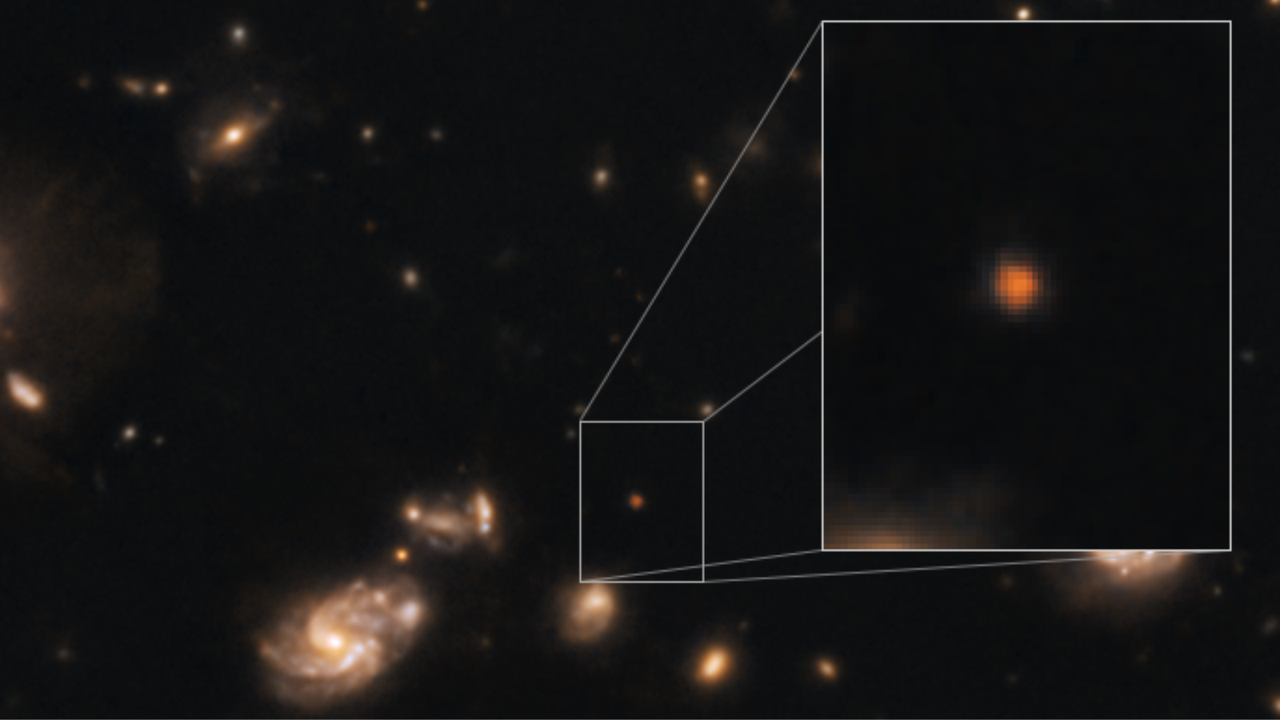
Using the James Webb Space Telescope (JWST), astronomers have spotted a very bright and mysterious object that could be a galaxy that emerged just 100 million years after the Big Bang, which would make it the universe's earliest known galaxy, a new study suggests.
Alternatively, Capotauro may be an extraordinary brown dwarf (a "failed star" that is more massive than the largest gas giant planets but not large enough to sustain nuclear fusion in its core) that lives on the outer edges of the Milky Way while smoldering at a mere 80 degrees Fahrenheit (27 degrees Celsius).
Capotauro's exact identity is not certain yet, the researchers wrote in the paper, which was posted Sept. 1 to the preprint server arXiv but has not been peer-reviewed yet.
"Capotauro, whatever it is, seems really interesting and promising," co-author Giovanni Gandolfi, an astrophysicist at the National Institute of Astrophysics in Italy, told Live Science.
Capotauro was originally spotted by Gandolfi and his team during a previous study, in which they tried to identify very old galaxies in JWST observations. But the lack of fine-grained data made it impossible to narrow down the object's identity, which Gandolfi said was like having a slither of DNA at a crime scene but too many matches in the FBI database to be helpful.
Then, in March, JWST released more data on Capotauro that was like getting a partial fingerprint, thus allowing them to whittle down the list to just a handful of suspects, Gandolfi said.
To determine what Capotauro could be, the team used images taken by JWST's Near Infrared Camera (NIRCam) at seven wavelengths as part of the Cosmic Evolution Early Release Science (CEERS) survey to measure Capotauro's brightness. The object was detected only at the two longest NIRCam wavelengths.
Then, they used limited, but more fine-grained data from JWST's Near Infrared Spectrograph (NIRSpec) to get a more accurate picture of Capotauro's age and temperature.
Combining the NIRCam and NIRSpec data, the researchers used models to test three possible galaxy configurations, as well as a scenario in which Capotauro might instead be a brown dwarf on the outer rim of the Milky Way. They also tested a range of other possible scenarios, such as the object being a very odd young galaxy or a peculiar exoplanet.
The results were inconclusive, meaning the team could not decisively determine Capotauro's identity. However, they identified the two most likely options.
Under the early-galaxy interpretation, Capotauro was consistently found to have formed around 100 million years after the Big Bang — pushing the age of the oldest known galaxy back by around 200 million years. It was estimated to be gigantic, at over a billion solar masses.
The other possibility is that Capotauro is a very unusual brown dwarf. If this is the case, Capotauro would be the coldest and farthest known brown dwarf in our galaxy, at over seven light-years away and only 300 kelvins (80 F, or 27 C), the researchers wrote in the study. If Capotauro is a pristine brown dwarf, Gandolfi said, scientists now have the chance to investigate the formation of our galaxy.
Both possibilities are "very exciting" because they would challenge what we thought we knew about our own galaxy and how galaxies form and evolve in general, Gandolfi added.
Muhammad Latif, an astrophysicist at United Arab Emirates University who was not involved in the research, said Capotauro is "one of the most puzzling discoveries" from JWST to date.
"It's a very intriguing object in the sense that whatever the way you interpret it, it basically is kind of pushing the boundaries of our knowledge to the edge," he told Live Science.
More precise data on the light emitted by Capotauro is needed to pinpoint its exact properties, Latif said. The team has submitted a request for JWST to gather more data on this mysterious object, Gandolfi added, and is scanning other areas of the universe for similar-looking objects.







